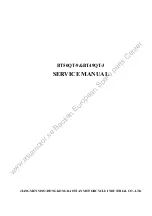
D14/4
WHEELS, BRAKES AND TYRES
F10
TYRE REPLACEMENT
Before a tyre, new or used, is replaced, ot should be
carefully checked inside and outside for loose objects
or nails, flints, glass and cuts.
Do not forget that although there may be nothing
visible outside there could be a nail projecting inside.
When repairing a tyre or tube be patient and see that
the area of the repair is absolutely clean before
applying solution. A rag dampened with petrol will
help to clean the area, but it must be completely dry
before solution is applied.
Remember that when replacing the tyre, it is very
easy to cause another puncture by nipping the inner
tube with the levers.
Some new tyres have balance adjustment rubbers
inside the casing, they are not patches and should not
be disturbed.
When there is a white spot near the tyre bead it
should be placed at the valve position. This will ensure
a very high degree of tyre balance.
If the spokes have been tensioned, or replaced, see
that they are not projecting through the nipples. File
flush any that are showing through. Replace the rim
tape with the rough side next to the rim.
FIG. F14.
Cover and tube assembled ready for fitting.
FIG. F15.
Commencing to fit the tyre.
Fit the tube in the tyre and inflate just sufficient to
round it out without stretch.
Too mush air makes fitting difficult, and too little
will make the tube more liable to be nipped by the
levers. Dust the tube and inside the cover with dusting
chalk.
Lubricate the cover beads and the rim flanges with a
soap and water solution or liquid soap.
Pull the tube slightly out of the cover so that it
protrudes about 1" beyond the beads for about 4—5"
each side the valve as in Fig. F14.
Squeeze the beads together at the valve to prevent
the tube slipping back and offer the cover to the rim as
shown in Fig. F15, at the same time passing the valve
through the holes in the tape and rim.
Allow the lower bead to go into the well of the rim
and the upper bead to be above the rim flange.
Working from the valve outwards, press the lower
bead over the rim flange by hand, moving along in
short stretches, and ensuring that the bead lies right
down in the well of the rim — this is most important
(see Fig. F16). If necessary use a tyre lever for the last
few inches as in Fig. F17.
Summary of Contents for D14/4 BANTAM SUPREME D14/4 BANTAM SPORTS
Page 3: ...Page 3 ...
Page 4: ...Page 4 ...
Page 5: ...Page 5 ...
Page 28: ...D14 4 ENGINE B2 FIG B1 Engine exploded ...
Page 47: ...D14 4 CARBURETTER C2 FIG C 1 Concentric carburetter exploded ...
Page 55: ...D14 4 FRAME AND FITTINGS D2 FIG D1 Frame dimensions ...
Page 100: ...D14 4 ELECTRICAL SYSTEM G14 FIG G8 Wiring diagram all models except Bushman Pastoral ...
Page 101: ...D14 4 ELECTRICAL SYSTEM G15 FIG G9 Wiring diagram Bushman Pastoral models ...
















































